By Phillip Lord, carsales.com.au
Hyundai’s second-generation Kona small SUV offers something for everyone. It’s stylish, spacious, packed with features and drives nicely. Now, there’s a fuel-sipping Hybrid version for the first time that adds even more value to the equation and soon there will be a follow-up to the fully electric model from the first generation.
The only missing ingredient is a successor to the stove-hot Kona N, the only high-performance small SUV in its class, with Hyundai saying there are no plans for a new one.
But we’re here to talk about the Kona Hybrid specifically, which has recently joined the range in Australian showrooms and stands as an attractive alternative to the dominant Toyota models and more expensive hybrids from other rival brands.
How much does the Hyundai Kona Hybrid cost?
The 2023 Hyundai Kona Hybrid is available in two model grades: the base Kona Hybrid on test here, which starts at $36,000 plus on-road costs, and the more upmarket Kona Hybrid Premium, priced from $43,500 plus ORCs.
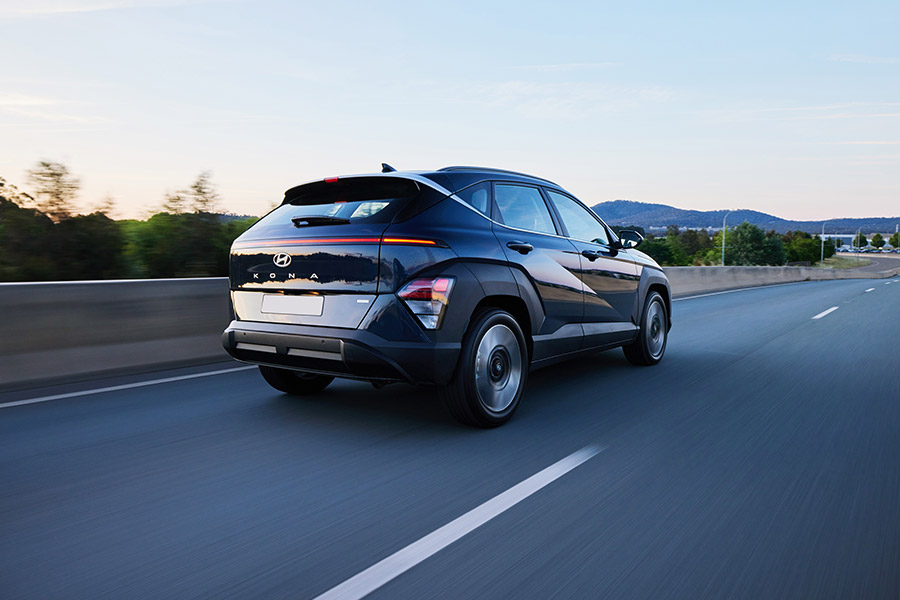
Both are available with an optional N Line package, which adds $4000 to the base model and $3000 to the Premium and brings numerous styling changes but no increase in performance or dynamic changes.
Each Kona Hybrid model commands a $4000 premium over the equivalent 2.0-litre petrol-engined version while the 1.6-litre turbo (with all-wheel drive, the rest are 2WD) opens at $40,000 as an N Line only. The 1.6T Premium N Line starts at $42,500.
The Kona was named carsales’ Best Small SUV earlier this year, and recently backed that up with Highly Commended and People’s Choice awards in carsales’ 2023 Car of the Year awards.
The first-ever petrol-electric Kona is positioned to take on the likes of the Toyota Corolla Cross Hybrid (from $36,480) and C-HR (from $38,465), just as GWM Australia is pitching its Haval Jolion Hybrid from a keen $36,990 drive-away.
Other hybrids in the fast-growing small SUV segment are combined with more expensive model grades, most notably the new Honda HR-V e:HEV (from $47,000 drive-away) and the soon-to-launch Nissan QASHQAI e-POWER (from $51,590 plus ORCs).
The Kia Niro Hybrid, which is closely related to the Kona, also starts higher at $44,930 plus ORCs.
What equipment comes with the Hyundai Kona Hybrid?
As we’ve seen with the mainstream models that launched earlier this year, the 2023 Hyundai Kona Hybrid makes an immediate impression with a bigger body and roomier cabin, improved safety systems, Bluelink telematics and over-the-air update capabilities.
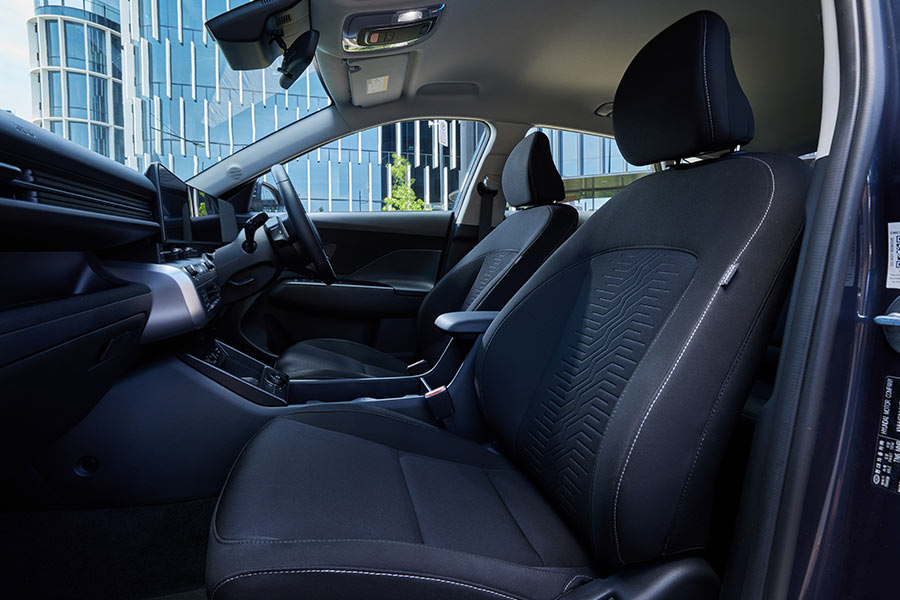
Key standard features on the Kona Hybrid include dual-zone climate control, a smart key with push-button start, remote start and remote front window opening, three driver profiles to preset preferences, power lumbar adjustment for the driver’s seat, and heated and power-folding exterior mirrors.
The Kona Hybrid comes with the five-year/unlimited-kilometre warranty and requires servicing every 12 months or 15,000km.
The capped-price service scheme at participating Hyundai dealers is $399 per visit over the first five years, and includes continuation of roadside assist for 12 months with each annual service.
How safe is the Hyundai Kona Hybrid?
The 2023 Hyundai Kona Hybrid comes with a comprehensive list of safety and driver assistance equipment.
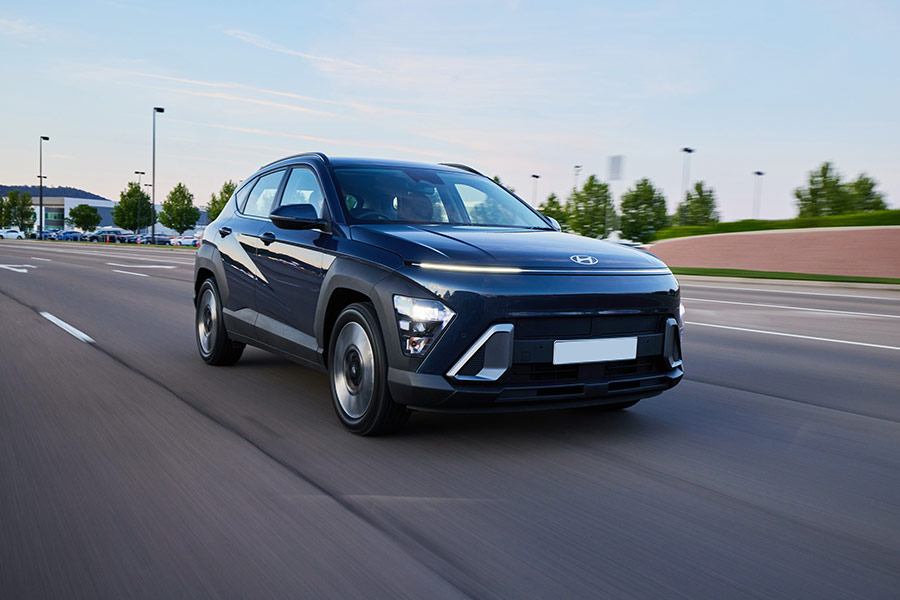
Adaptive cruise control with stop-and-go, lane keeping/following assist and blind spot collision avoidance assist are part of the safety suite, while forward collision warning’s ability to detect stationary and moving motorcycles is new for the second-generation Kona.
Other features include front and rear parking sensors, a reversing camera and rear collision warning, but a 360-degree camera is only available on the Premium model.
The steering has haptic feedback, and there’s driver attention warning for leading vehicle departure and forward attention.
Speed sign recognition is also part of the package, and the audible warning – which beeps every time the system detects the car is travelling above the posted limit – can be switched off but does reset on ignition start.
A centre front airbag is new to this generation Kona, helping avoid head knocks between front seat passengers in the event of a collision. This combines with dual front, front side and curtain airbags.
Beyond the surround-view camera, the Kona Hybrid Premium also picks up side sensors, remote smart parking and reverse parking collision avoidance.
LED headlights incorporating high beam assist are standard across the range, however the entry Kona Hybrid lacks projector beams and the full-width ‘seamless horizon’ positioning LED lighting found on the Premium.
Bluelink connectivity and the smartphone app provide peace of mind for safety back-up with automatic collision notification and an SOS button for emergency assistance.
As for an ANCAP safety rating, the Kona is as yet untested; ANCAP is awaiting the results of a Euro NCAP test and will study these to work out a local rating.
What is the Hyundai Kona Hybrid like inside?
The 2023 Hyundai Kona Hybrid shares its interior with the petrol-engined models introduced in June, so much of the same comments apply.
The first impressions for this writer were the sense of up-to-the-minute tech and design on the digital dash, and with features like the column-mounted gear lever wand and really practical, useful large centre tray storage.
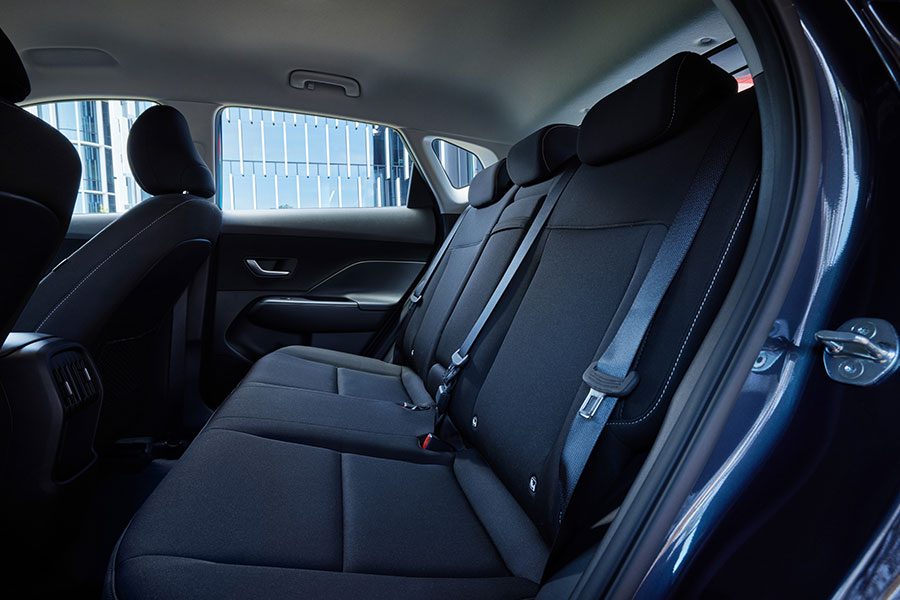
The sense of quality takes a bit of a knock when you see the hard plastic door cards, and in the test vehicle at least, a rather dull, unimaginative dark interior.
At least there are multiple driver’s seat and steering adjustments to find a comfortable driving position, aided by the strong adjustable lumbar support.
The view to the instruments and out to the front and sides is very good, and you have the multiple storage compartments in doors and the large centre tray already mentioned.
The rear seat area is roomy, while outboard ISOFIX child restraint mounts and three top tether strap points cover off child seat requirements. It’s worth noting the shape of the back seat, too: it’s a useful flat design allowing for better, safer child seat stability and placement than with a heavily contoured rear seat.
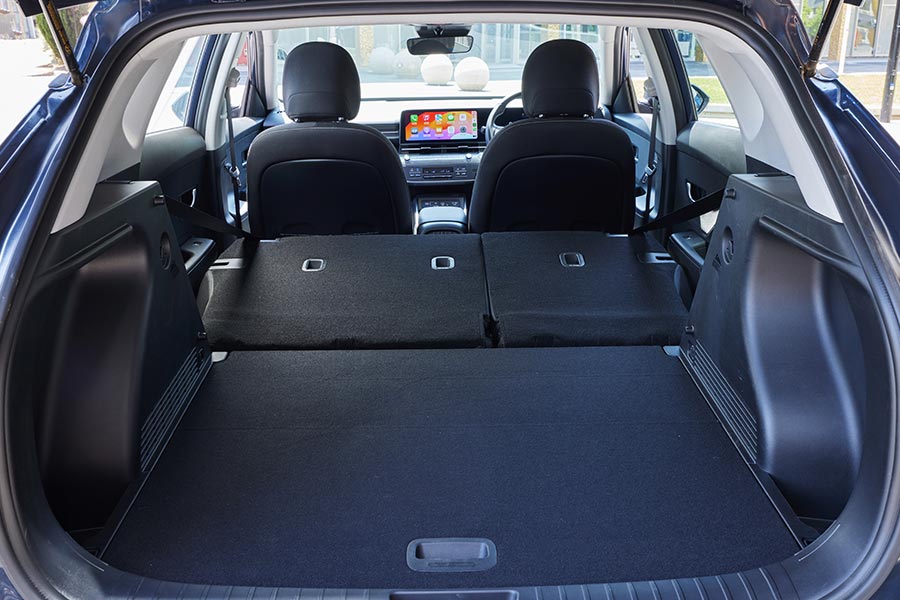
The boot, which hides a space-saver spare wheel under the floor, offers 407 litres of cargo space. With the 60/40-split folding rear seats down, there’s 1247L available.
What technology does the Hyundai Kona Hybrid feature?
The 2023 Hyundai Kona Hybrid has a 12.3-inch infotainment system with an embedded SIM offering Hyundai Bluelink and over-the-air (OTA) update capability with voice recognition.
Apple CarPlay and Android Auto (wireless) are integrated into the system, but there’s no embedded sat-nav at this entry-level, or any head-up display.
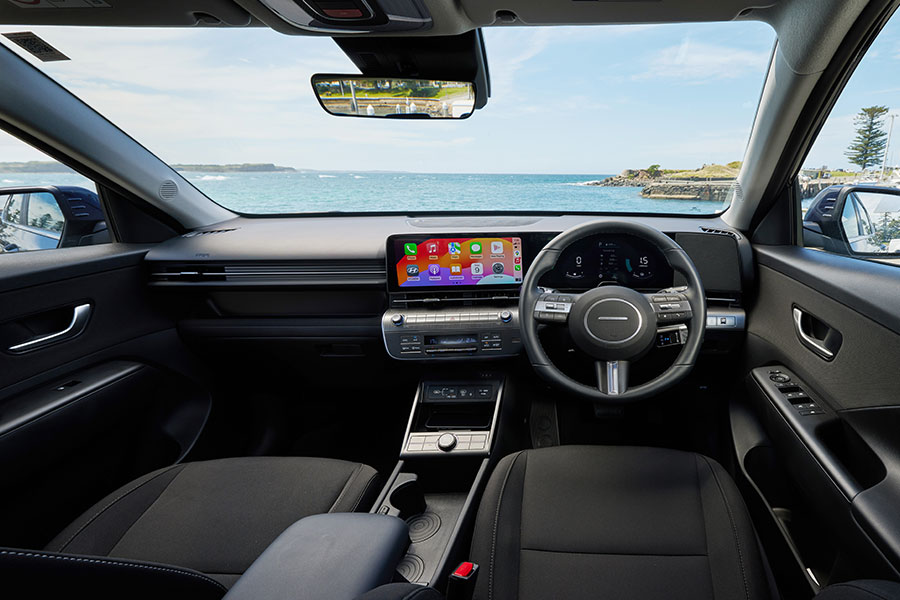
The dash is also digital, but only its 4.2-inch centre section is configurable at this entry point.
If you want to charge a smartphone, there’s the 15W wireless charging pad, plus two USB-C data/charging ports in the front and another two USB-C outlets in the back.
Hyundai says that the Type-C power outlets are designed around Power Delivery 3.0 standard and deliver an output of 27W/3A for rapid charging.
What powers the Hyundai Kona Hybrid?
The 2023 Hyundai Kona Hybrid uses a unique, lean-burning variant of the 1.6-litre four-cylinder petrol engine with an Atkinson cycle that produces 77kW of power and 144Nm of torque.
It is linked to a 32kW/170Nm electric motor that draws from a 1.32kW lithium-ion battery pack for maximum combined outputs of 104kW and 265Nm.
Four-stage selectable regenerative braking helps to recharge the high-voltage battery while driving, and it cannot be plugged-in to a public charging station to replenish. This is a conventional series hybrid set-up that does not require any intervention to operate.
The front wheels are driven via a six-speed dual-clutch automatic transmission.
How fuel-efficient is the Hyundai Kona Hybrid?
The 2023 Hyundai Kona Hybrid has an official claimed average consumption of 3.9L/100km on the combined-cycle test, making it one of the most efficient in its class.
On the launch drive, we averaged 5.1L/100km in mixed city/country driving, which works out to achieving approximately 745km of driving range from a full 38-litre tank of premium unleaded.
What is the Hyundai Kona Hybrid like to drive?
In the wide range of conditions in which Australians need to drive, the 2023 Hyundai Kona Hybrid has what it takes to tackle most roads, sealed or unsealed, with a good degree of competence.
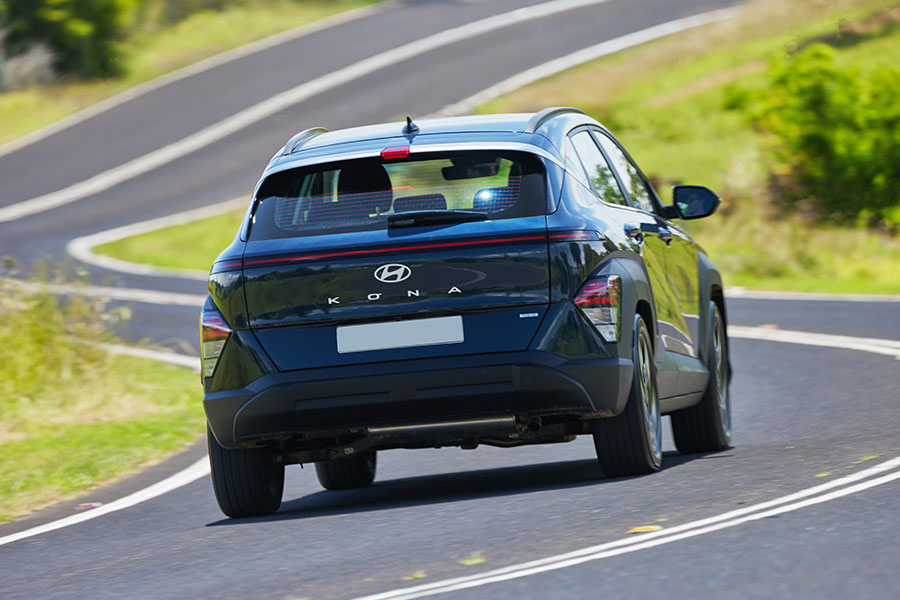
In short, this is a small SUV that, while not exciting, is thoroughly enjoyable to drive on a twisting road with surefooted handling, accurate steering, minimal body roll and suspension settings that are comfortable and compliant over the bumps.
The Kona Hybrid not only lapped up the varying quality of the ACT’s backroads without fuss, but it also had reasonable get-up-and-go while doing it.
This is not the enthusiast’s powertrain of choice, sure, but it has that nice hybrid blend of mostly silent urban operation and a quiet hum in easy country driving.
It is worth mentioning that this is contrasted by a coarse-sounding petrol engine when using full throttle – but it’s the contrast from the otherwise mute engine bay more than the sheer decibels that make you notice it.
Should I buy a Hyundai Kona Hybrid?
The 2023 Hyundai Kona Hybrid makes fuel-saving technology more accessible without any compromises in performance, space and practicality. That it arrives with a cheaper sticker price than some key rivals – from Honda, Nissan and even sister brand Kia – makes it even more compelling.
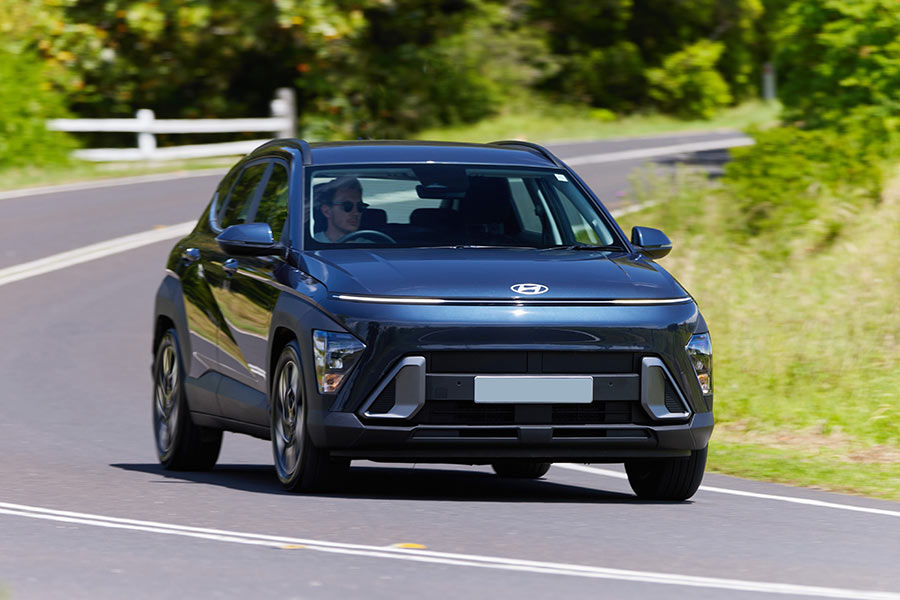
There are some shortcomings in the entry-level model though, with items such as sat-nav and the new Kona’s signature LED strip lighting missing, and the cabin materials could be higher quality to match the rest of the car.
But from this opening launch drive, Hyundai’s first-ever petrol-electric Kona proves to be light on fuel, offering decent if not exhilarating performance and a very good ride and handling compromise.
Combine that with a roomy interior for a small SUV, plus the standard features, and the Hyundai Kona Hybrid is a welcome addition that deserves close attention next to offerings from Toyota and any other mainstream brand you’d care to name.
2023 Hyundai Kona Hybrid at a glance:
Editor’s Rating: 7.9/10
| Price: $36,000 (plus on-road costs) |
Transmission: Six-speed dual-clutch automatic |
| Available: Now |
Fuel: 3.9L/100km (ADR Combined) |
| Powertrain: 1.6-litre four-cylinder petrol-electric |
CO2: 89g/km (ADR Combined) |
| Output: 77kW/144Nm (electric motor: 32kW/170Nm) |
Safety Rating: Not tested |
| Combined output: 104kW/265Nm |
Disclaimer: Images supplied by Hyundai Australia.
This article was prepared by an independent author. The information contained in this article represents the views and opinions of the original author, and is based on research carried out by the original author. The appearance of the article on Maxxia's website does not constitute an endorsement of its content by Maxxia in any way. The article has been made available for informational purposes only and should not be taken as advice. While all reasonable care has been taken to ensure that the statements made by the original author in the article are fair and accurate, Maxxia does not guarantee or warrant the accuracy or completeness of this information and will not be liable for, or in connection with, any loss or damage suffered as a result of any inaccuracies, errors or omissions or your reliance on this information. You should independently research and verify information before making any decision in respect of a vehicle.


